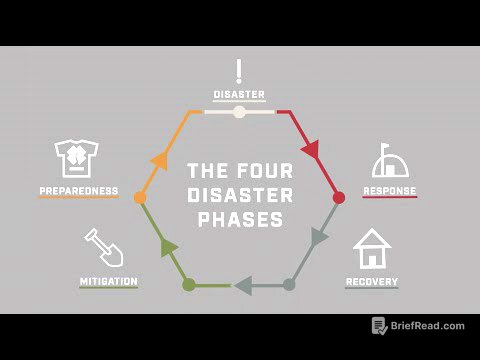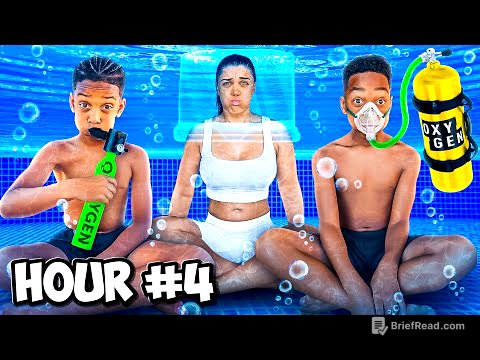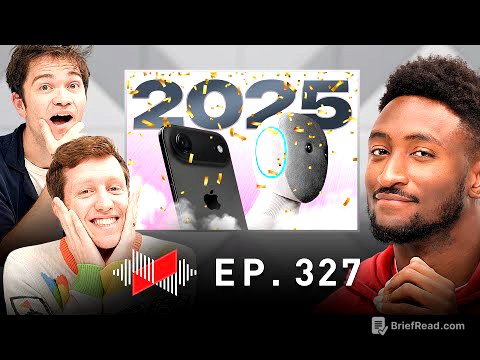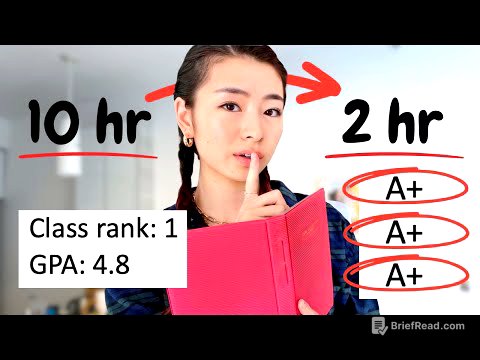TLDR;
This video provides an overview of the 14 categories of students with disabilities, offering definitions, characteristics, and teaching strategies for each. It covers a range of disabilities from intellectual impairments and deafness to autism and traumatic brain injuries, giving educators practical advice on how to support these students in the classroom.
- Intellectual disability involves below-average intelligence and adaptive behaviour deficits, requiring concrete examples and patience in teaching.
- Multiple disabilities involve simultaneous impairments, often needing lifelong care and specific modifications.
- Autism significantly affects communication and social interaction, necessitating clear instructions and structured routines.
Intellectual Disability [0:23]
Intellectual disability is characterised by significantly below-average general intelligence alongside deficits in adaptive behaviour. Children with this disability typically have an IQ below 70 and struggle with comprehension and everyday life functions, such as personal hygiene. Effective teaching strategies include using concrete examples, demonstrating patience, breaking down material into smaller steps, and employing manipulatives and engaging resources to aid learning.
Deaf-Blindness [1:09]
Deaf-blindness refers to students who have both hearing and visual disabilities, often evident before the age of three. A common cause is Usher syndrome, a genetic condition present at birth, with hearing loss being a primary symptom. Teachers should use large-print textbooks, Braille, sign language, and tactile learning methods to support these students.
Specific Learning Disability [1:44]
A specific learning disability involves a disorder in basic psychological processes, affecting the ability to think, speak, read, write, and do maths. Students may struggle with particular academic skill sets, such as maths, reading or writing. Teachers should carefully review a student's Individual Education Program (IEP) to identify appropriate accommodations and understand their strengths and weaknesses to provide targeted support.
Deafness [2:25]
Deafness is defined as the inability to comprehend verbal language due to a significant lack of hearing ability. Children with deafness experience a hearing loss greater than 90 decibels in pitch and loudness, making it difficult to hear even with amplification. Teachers can support these students by using text-to-speech technology and providing a classroom note-taker.
Developmental Disabilities [3:10]
Developmental disabilities are identified in children aged three through nine who exhibit developmental delays in physical, cognitive, social, emotional, or adaptive development. These children often receive early intervention services tailored to their specific needs. Early intervention includes assistive technology, medical, nursing, and nutritional services, potentially involving specific dietary recommendations and various medical treatments.
Other Health Impairments [3:56]
This category includes a range of conditions that limit a student's strength, vitality, or alertness due to acute health problems. Many students in this category have difficulties related to Attention Deficit Hyperactivity Disorder (ADHD), leading to concentration issues. Teachers should focus on teaching to the students' strengths and creating opportunities for them to succeed.
Emotional Disturbance [4:27]
Emotional disturbance encompasses students with conditions such as bipolar disorder, depression, anxiety, and other psychological problems. These children may be ill-tempered, easily angered, withdrawn, or antisocial. Teachers should implement behaviour intervention plans for each student and be prepared with a plan of action to manage challenging behaviours.
Speech Language Impairment [5:07]
Speech-language impairment involves communication disorders such as stuttering, impaired articulation, and language or voice issues. These students may struggle with class presentations and participation. Early intervention has shown significant improvement, and teachers should collaborate regularly with speech-language pathologists to provide the best education for these students.
Traumatic Brain Injury [5:49]
Traumatic brain injury (TBI) is an acquired injury to the brain caused by an external physical force, resulting in total or partial functional disability. Students with TBI often experience memory and concentration problems. Teachers should modify assignments, provide extra time, use clear worksheets, and scaffold learning to accommodate these students' needs.
Orthopedic Impairments [6:32]
Orthopedic impairments involve severe issues with bones or muscles that negatively affect a child's educational performance. These students may have severe burns, deformations, bone abnormalities, or muscle distortions. Teachers should arrange the classroom to ensure clear pathways, seat students at the front of the room, allow them to leave early if needed, and provide comfortable seating.
Visual Impairments [7:15]
Visual impairments are defined as vision problems, even with corrective lenses, that adversely affect a child's educational performance. Students may have difficulties reading, using technology, and various eye conditions. Assistive technology and large-print books are often necessary to support these students.
Multiple Disabilities
Multiple disabilities involve simultaneous impairments, such as intellectual disability and blindness, occurring at the same time. These students require specific modifications and accommodations, assistive technology, and behaviour monitoring. They often need care throughout their lives and may receive education in a hospital or residential school setting.
Hearing Impairments [8:34]
Hearing impairments involve permanent or fluctuating hearing loss not included under the definition of deafness. Students may struggle with vocabulary, grammar, listening to lectures, and participating in classroom discussions. Teachers should use voice articulation, sign language, note-takers, and assistive technology. When lecturing, teachers should be animated and use hand signals as a quick formative assessment.
Autism [9:14]
Autism is a developmental disability significantly affecting verbal and nonverbal communication and social interaction, generally evident before age three. Teaching autistic students can be challenging due to the wide range of characteristics they possess, including unusual fixations and the need for structured routines. Teachers should give clear instructions one step at a time and use various cues to support these students, providing clear directions, routines, and procedures.









